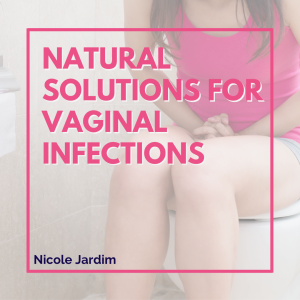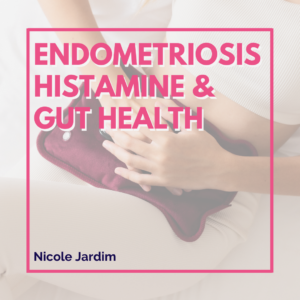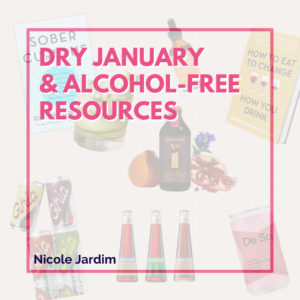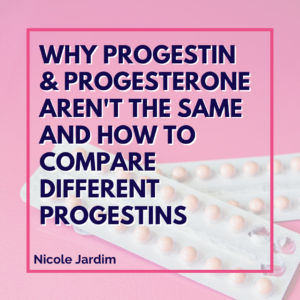Have you ever had a vaginal infection?
Have you ever felt confused about what’s going on “down there” or what the heck to do about it?
Oof. Trust me, I’ve been there.
While vagina problems aren’t #periodproblems per se, they are very much linked to the menstrual cycle, so they’re important to talk about.
In case you’re currently as confused as I used to be about all this, I thought I’d break it down for you.

The most common types of infections are yeast infections & bacterial vaginosis.
What is a yeast infection?
Candida Vaginitis (CV) aka a yeast infection is a vaginal infection caused by an overgrowth of Candida, a type of fungi (anyone else watching The Last Of Us on HBO? Omg so good. Don’t worry, your vagina fungi is not going to turn you into a monster. Okay, I digress, lol).
A small amount of candida is actually common in a healthy vaginal microbiome, but too much can mean trouble downtown.
What are symptoms of a yeast infection?
- Vaginal + vulvar itching
- Redness & soreness
- White vaginal discharge with a clumpy consistency (cottage cheese-esque)
- Possible pain during sex
- Sometimes pain while you pee
- Sometimes a red or scaly rash
- A yeasty smell “down there”
Delightful.

“Whyyyyyy does this happen to me Nicole?!”
Both CV and BV have to do with your gut microbiome and vaginal microbiome (yes, that is a thing).
The vaginal microbiome is defined as:
The complex ecosystem of microorganisms, including bacteria and fungi, that lives inside the vagina. [1]
Lactobacilli are the good guys and when there’s a lack of that bacteria in your vaginal microbiome, pathogens may colonize. If they do, that’s referred to as vaginal dysbiosis.
Ever done a vaginal pH test? The acidity of your vagina is a rough metric for the presence of protective bacteria in your vaginal microbiome. Cool!
The microbiome is really at the root of yeast infection issues. Some additional issues that may trigger a yeast infection, when something’s up with your microbiome include:
- During sex (penetrative, oral or with another vagina owner) your microbiome is exposed to another person’s microbiome. This can introduce new pathogens + change your vaginal pH to a level where bacteria/fungi thrive.
- Underwear and clothing made of synthetic fabrics
- Antibiotics or, ahem, the pill [2]
- Exposure to synthetic chemicals/fragrances, particularly in vaginal care products and period products
How to treat a yeast infection?
First, you definitely want to go to your doctor and get tested so you know for sure you have a yeast infection.
Or, you can order a test online. We’re living in a time when you don’t even have to leave your house to get testing done, which is pretty sweet. Scroll down for at-home testing options.
Note: If you have recurring infections, sometimes the type of treatment depends on the type of yeast you’re dealing with, so this is where testing is obviously very helpful.
Generally speaking, you would treat a yeast infection with an antifungal or boric acid + work on getting that microbiome in check, girl!
Grab your copy of Fix Your Period and open up to Week Three: Fix Your Gut. This is a great place to start.
I’m going to give you the scoop on BV now, but keep reading or scroll down for the two best at-home testing options for you.
What is Bacterial Vaginosis?
Okayyyy, Bacterial Vaginosis (BV) is a condition caused by the overgrowth of opportunistic bacteria in the vagina. [3]
Almost 30% of women/people with vaginas get BV each year. [4] 🤯
Doctors often provide a diagnosis based on symptoms alone (without testing) and the majority of the time BV is misdiagnosed. In fact, in one small study, 77% of yeast infection diagnoses and 61% of BV diagnoses were incorrect! [5] Ugh.
What you need to know about BV
Remember, the vaginal microbiome consists of protective bacteria. But when certain bacteria (such as Garderella) overgrow, displacing the protective ones, this = dysbiosis. [6]
Disruptive bacteria can cause symptoms like:
- Abnormal discharge (off-white, gray or greenish. Thin consistency as opposed to clumpy that you would see with yeast infections)
- A fishy smell (as opposed to the yeasty, bread-like smell of a yeast infection)
- Sometimes soreness or itching (itching is more common with yeast infections)
Surprise surprise, hormones have a role in the composition of the vaginal microbiome! [7]
Our bestie, estrogen, correlates with the health of lactobacilli, the “good” bacteria that create a lactic acid dominant environment in the vagina.
This is why you might experience infections with:
- Hormonal fluctuations during the menstrual cycle
- Pregnancy and postpartum
- Changing birth control methods
- Perimenopause & menopause
Blood sugar plays a role too! Research shows a link between insulin & vaginal infections. [8] 😬
If blood sugar levels are consistently high, that creates an environment of high sugar in the mucus membranes (including the vagina!), and this is the perfect environment for the overgrowth of bacteria.

“How do I get rid of it, Nicole?!”
Traditionally, antibiotics are prescribed for BV. But, ironically and horribly, antibiotics destroy your gut microbiome and, yeah, you need your gut to be happy to prevent these infections from happening in the first place.
Sooooo maintaining blood sugar levels and focusing on gut health are important steps in both treating & preventing these infections.
You’re going to want to flip to Week Two: Step Off The Blood Sugar Rollercoaster in my book, Fix Your Period.
Two amazing at-home testing options for you 💕
1. Evvy – A new company all about Integrative vaginal healthcare. They offer a comprehensive service that includes a vaginal microbiome test + treatment & coaching options. Use code FYPERIOD10 for $10 off.
2. Let’s Get Checked is my longtime go-to for at home hormone testing, and they also offer other testing options like their vaginitis test kit. Use code PERIOD25 for 25% off your vaginitis test kit.
My supplement protocol for unhappy vaginas
In addition to testing, working on your gut health and balancing your blood sugar, there are some key supplements that will be very helpful for you too. Take a look through my protocols for Yeast Infections and Bacterial Vaginosis over at my Fullscript Supplement Dispensary.
Bacterial Vaginosis Treatment Protocol
Yeast Infection Treatment Protocol
Note: you’ll have to provide your email and sign up for an account to get access to the protocols.
Wishing you and your vagina all the best,
Nicole
References:
- https://www.evvy.com/blog/meet-your-microbiome
- https://www.ncbi.nlm.nih.gov/pmc/articles/PMC4752384/, https://pubmed.ncbi.nlm.nih.gov/33876556/, https://pubmed.ncbi.nlm.nih.gov/6231418/, https://pubmed.ncbi.nlm.nih.gov/33330122/, https://www.ncbi.nlm.nih.gov/pmc/articles/PMC7696078/
- https://www.cdc.gov/std/bv/stdfact-bacterial-vaginosis.htm
- https://pubmed.ncbi.nlm.nih.gov/17621244/
- https://www.ncbi.nlm.nih.gov/pmc/articles/PMC1395331/
- https://www.evvy.com/blog/what-is-bv
- https://pubmed.ncbi.nlm.nih.gov/34049772/
- https://pubmed.ncbi.nlm.nih.gov/28065975/, https://pubmed.ncbi.nlm.nih.gov/34561861/



